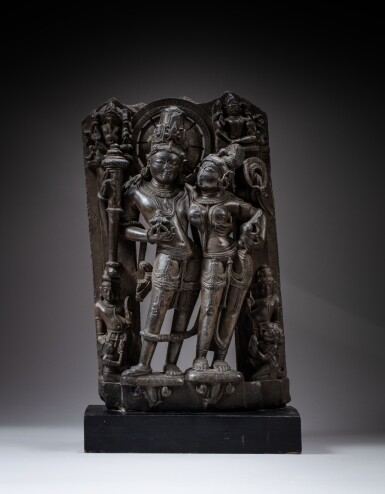Arts d'Asie
Arts d'Asie

A blackstone stele depicting Lakshminarayana, Northern India, possibly Haryana, 12th century | 印度北部 或為哈里亞納邦 十二世紀 黑石雕吉祥天女立像
Auction Closed
June 14, 03:20 PM GMT
Estimate
60,000 - 80,000 EUR
Lot Details
Description
A blackstone stele depicting Lakshminarayana
Northern India, possibly Haryana, 12th century
Height 48 cm, 18⅞ in.
__________________________________________________________________________
Stèle en pierre noire représentant Lakshminarayana, Inde du Nord, possiblement Haryana, XIIe siècle
__________________________________________________________________________
印度北部 或為哈里亞納邦 十二世紀 黑石雕吉祥天女立像
Collection of Claude Vérité (1928-2018), from ca. 1955 to 1970.
Bonhams New York, 19th March 2019, lot 833.
__________________________________________________________________________
Claude Vérité (1928-2018)收藏,1955至1970年
紐約邦瀚斯,2019年3月19日,編號833
Vérité, une passion des cultures, Neuflize OBC, Paris, 2008.
__________________________________________________________________________
《Vérité, une passion des cultures》,Neuflize OBC,巴黎,2008年
